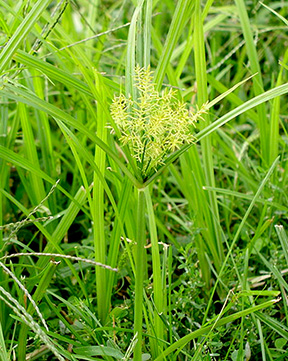 |
Previous Issues |
| Cedar Mill Community Website |
|
Search the Cedar Mill News: |
About The Cedar Mill News |
|
|||||||
| Volume 12, Issue 4 | April 2014 |
||||||
Previous article |
Next article |
||
Yellow Nutsedge* and Green Lawn Care Tips
|
|||
 |
Plant ID—Look for the mature plant, with:
Control Tips
Spring Green Lawn Care Tips
As lawn-mowing season returns, check the setting on your blade. Selecting the right height for your grass type will keep it healthy all season long.
Did you know you can compost your grass and lawn clippings too? Just be careful not to compost clippings that might contain weed seeds or herbicide residue. Be sure to layer this “green” material (high in nitrogen) with enough “brown” material like twigs, dryer lint, or cardboard, which are all more carbon rich.
April is the optimum time to fertilize your lawn. To keep cost and waste down, consider getting a soil test to calibrate the right amount of just the right nutrients for your lawn. Keep the nutrients, which cause water-quality problems, out of our rivers by avoiding application when it is about to rain, and by not over-watering your lawn.
April is also a good time to de-thatch your lawn. Tackle moss by scratching it off the surface before reseeding.
*Nutsedge, AKA: Chufa sedge, Nut grass, Tigernut sedge, or Earth almond
Previous article
![]()
Like us on Facebook for timely updates
Published monthly by Pioneer Marketing & Design
Publisher/Editor:Virginia Bruce
info@cedarmillnews.com
PO Box 91061
Portland, Oregon 97291
© 2013